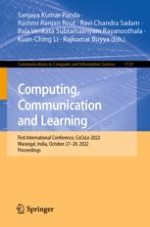2022 | OriginalPaper | Chapter
Intelligent Intrusion Detection System Using Deep Learning Technique
Authors : Azriel Henry, Sunil Gautam
Published in: Computing, Communication and Learning
Publisher: Springer Nature Switzerland
Activate our intelligent search to find suitable subject content or patents.
Select sections of text to find matching patents with Artificial Intelligence. powered by
Select sections of text to find additional relevant content using AI-assisted search. powered by
